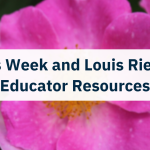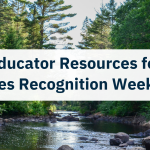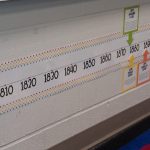Genius Hour: Breaking Out of the Box
Why is Genius Hour such an effective learning model?
A sixth-grade student smiled proudly as she presented her project. She picked the topic, designed the experiment, convinced her mother to purchase the supplies, and spent weeks carefully measuring plant growth in her basement. The entire process and results stood out brightly on the yellow and green construction paper adorning the tri-fold next to her. Proudly, she announced that in moderate amounts, caffeine could enhance the growth and efficiency of highly trained athletes (in her case, plants). However, adding sugar (soda) to the mix does not achieve the same results (the plants rot).
To this day, I remember the results of that experiment along with the speech designed to review the efficacy of fresco restoration in the Sistine Chapel, the research project that studied valuation of objects produced during or to aid performance art, and masters level research on learned helplessness in high achieving learners. Why do these topics remain so clear in my mind? Because I generated the research question, designed the project, and then implemented it. Certainly, mentoring played a large role in the successful outcome of each project, but self-determined projects are among the most memorable tools of learning. I was fortunate to have parents, educators, and professors advocating project-based learning long before the current trend. I would posit, though, that these facilitators and mentors were much more. They were early adopters of “genius hour” principles.
Project-Based Learning
According to Phyllis Blumenfeld, project-based learning requires that a student investigates and answers a learning question. In Alistair Morgan’s “Theoretical Aspects of Project-Based Learning in Higher Education,” he highlights three models of project-based learning that occur within the field of education:
(1) project exercises, in which learners apply the knowledge that they have already acquired to solve a problem,
(2) project component, in which real-world issues are studied and explored in parallel, often independently, to a course curriculum,
(3) project orientation, in which learner projects and direct educator instruction determine the entire program of study becomes supplemental. (Morgan, 1983).
In models one and two, the experts, educators, departments, curriculum designers, and states define the topic, learning target, and project formulation. A talented educator can facilitate learner growth, creativity, and skill-building in these models. Though these projects can produce high levels of learner engagement and are often learner-centred, they are not learner-driven. The research methods and the products, often posters, research presentations, or, in more modern classrooms, web pages, social media feeds, and videos, are mandated by an educator’s instruction.
Model three is different. It shares the primary focus – a project basis – but relies upon the learner’s motivation to launch and develop. In this way, educators may develop authentic tasks for learners to develop the skills necessary to complete the project. Still, the focus is on a learner’s own passion and direction. Learners have the opportunity to define the content and the direction of their investigation. In short, model three looks a whole lot like a new movement called Genius Hour.
Genius Hour
The Basics of Genius Hour
According to its website, “Genius Hour is a movement that allows students to explore their own passions and encourages creativity in the classroom.” This model makes learner choice the most important element in a classroom. Its origins are murky, but large corporations have used a 20% model for many years. In Megan Allens’ “Genius Hour Makes Great Teachers Redundant,” she states that policies at Google and other large corporations encourage employees to spend 20% of their time on personal interest projects. As a result, employee engagement and productivity purportedly increase.
There’s something about pursuing individual interests that makes a job more pleasant. It allows employees to express the individualism or creativity they need to feel engaged and motivated. Therefore, we might assume that academic achievement and engagement will increase in the school setting by providing learners with a creative outlet. Now referred to as Genius Hour, this designated period allows learners to research a topic and create a product they might share with their class or outside of school. Key features of Genius Hour include a focus on learner autonomy and the lack of strict deadlines.
Role of the Educator in Genius Hour
Think back to the three models of project-based learning. In all three, the educator serves as a facilitator to varying degrees. However, the Genius Hour model requires that educators walk the fine line between director and collaborator. Because learners construct the learning experiences, Virginia Vigil suggests that “teachers…strategically create structure but do not determine the path.” The structure of a Genius Hour itself lends to each individual’s project, encouraging discovery and exploration while ensuring that the process is individual and customized. The educator employing Genius Hour functions as a mentor, asking questions and prompting learners to seek expert resources. It is not possible that the educator masters each concept but models the skills learners need. For instance, Vigil suggests teaching learners to use “web conferring systems” for interviews, to craft “professional emails” to experts, or “provide instruction in the use of software…to support the development of digital presentations.”
Structuring the Classroom
Of course, classroom structure is a key factor in managing learner behaviour and anxiety and promoting a specific classroom culture. Educators must set learners’ expectations in a traditional classroom, account for differentiation, and carefully implement scaffold supports. It is particularly important because, in studies of the Genius Hour model, Elaine Simon found that some learners are “overwhelmed with the amount of freedom of knowledge and personal choice.” Through careful mentoring, however, educators can manage the anxieties of learners.
For instance, skills-based support or careful questioning, similar to what might happen in a traditional classroom, can be modelled individually as the educator monitors the needs of every learner. Furthermore, Simon found that valuing cooperative learning, in which learners define their research and peer review the work of others, is also helpful. In this case, learner-as-expert can come to life, as they are responsible for “critical inquiry, posing central questions developing research plans, … [and] evaluating researchers’ credibility and arguments.” As learners take on greater responsibility, they are more likely to take academic risks. Empowered learners result from clear and concise expectations supported by appropriate scaffolding and differentiation.
Motivating Learners
In Vigil’s report, Genius Hour aims to increase engagement and create a culture of rigour that provides an opportunity for “rich experiences” for learners, not just higher standards. Carol Dweck’s Mindset: The New Psychology of Success claims that providing learners with a rich experience activates “intrinsic motivations,” thereby supporting achievement and growth. Many studies have supported the idea that a shift to learner-centred teaching models empowers and engages learners. Involving learners more deeply in their learning personalizes the learning process. It enables them to pursue a topic via a unique path. Ultimately, Genius Hour is a natural method of inviting learners to invest in the process of learning. Simon suggests that this is done “by meeting students at their own level and empowering them to surpass that level every step of the way.”
Final Thoughts on Genius Hour
By taking on the responsibility for defining their research questions and developing the project’s path, learners participating in the Genius Hour model learn their way. Transfer and application of knowledge occur at high levels because learners are naturally engaged and interested. Giving up the reins, however, can be difficult. Educator as facilitator is a common role today. However, in the Genius Hour model, the role is scaled back even further, though educators still facilitate curriculum development and maintain the classroom culture and structure. I believe that the following shortlist of considerations are imperative to address when structuring a classroom for Genius Hour:
-
- What resources do learners have access to?
- How will learners gain access to experts beyond the walls of the classroom?
- What questioning methods are most appropriate to assist learners in pushing their inquiry beyond their current level of understanding?
Thinking back to my self-determined projects, it was the facilitation of home-based experimentation by educators, constant encouragement through failures or dead-ends in research, and guidance in questioning that I remember most clearly. Learners cannot achieve deep learning in a single hour or day. But, by breaking out of the box and moving beyond the walls of our classrooms, our learners will benefit.
Sources
- Genius Hour Makes Great Teachers Redundant (Megan Allen)
- Motivating Project-Based Learning: Sustaining the Doing, Supporting the Learning (Phyllis Blumenfeld, Elliot Soloway, Ronald Marx, Joseph Krajcik, Mark Guzdial & Annemarie Palincsar)
- Mindset: The New Psychology of Success (Carol Dweck)
- Theoretical Aspects of Project-Based Learning in Higher Education (Alistair Morgan)
- Genius Hour: Critical Inquiry and Differentiation (Elaine Simos)
- Genius Hour: A Learner-Centered Approach to Increasing Rigor in the Classroom (Virginia Padilla Vigil and Rebecca Mieliwocki)








